Abstract
The results of IHA test surveys of persons with malaria parasitaemia in Ethiopia and the Philippines suggest that the antibody response may be influenced by the frequency and intensity of the antigenic stimulations and also be age-dependent. Antibody frequency distribution curves from four different areas suggest that the shape of such curves can provide some information about the endemicity of malaria. Results of similar and of parasitological surveys in Bangladesh, Ethiopia, Haiti, and the Philippines were compared and related to available malaria surveillance information. The results indicate that a serologic population profile may provide an indication of the history and status of malaria. Technical aspects of the IHA test are reviewed; it may be desirable to use homologous antigens instead of a simian Plasmodium antigen. To obtain the most useful additional epidemiological information about a malaria situation, serologic data need to be age-related, and longitudinal surveys are usually more informative than a cross-sectional survey.
Full text
PDF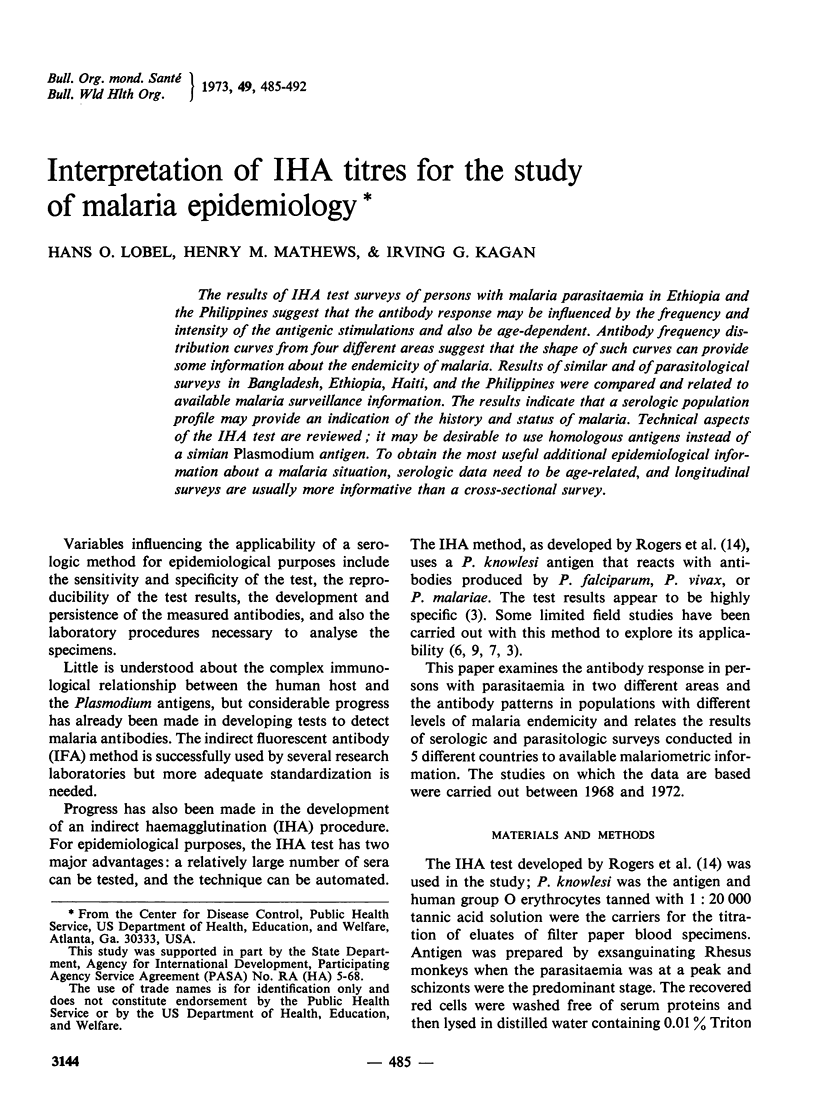
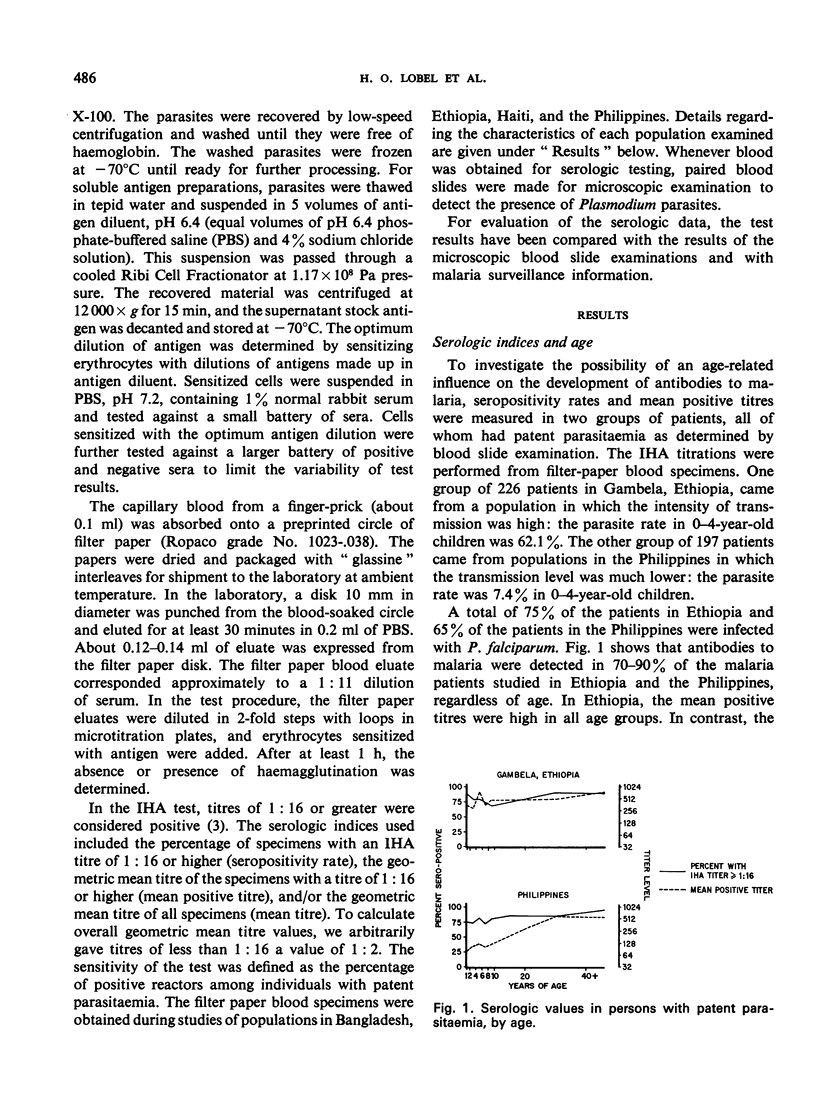
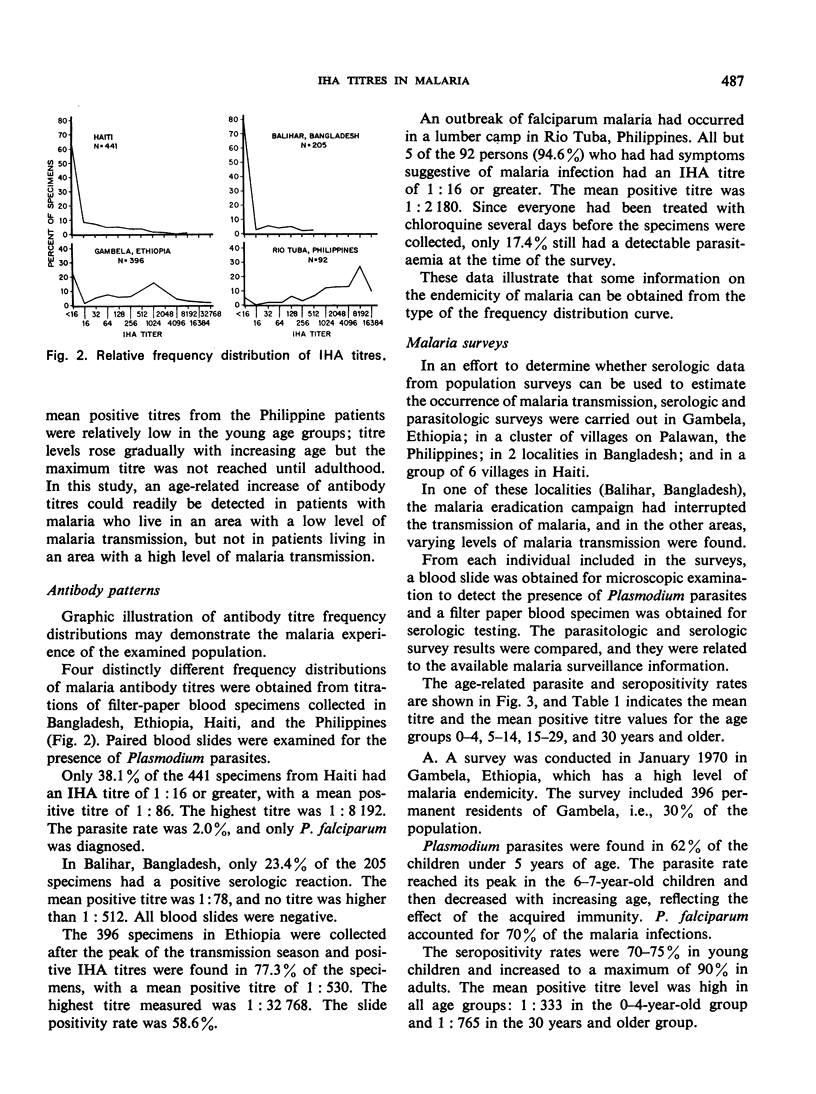
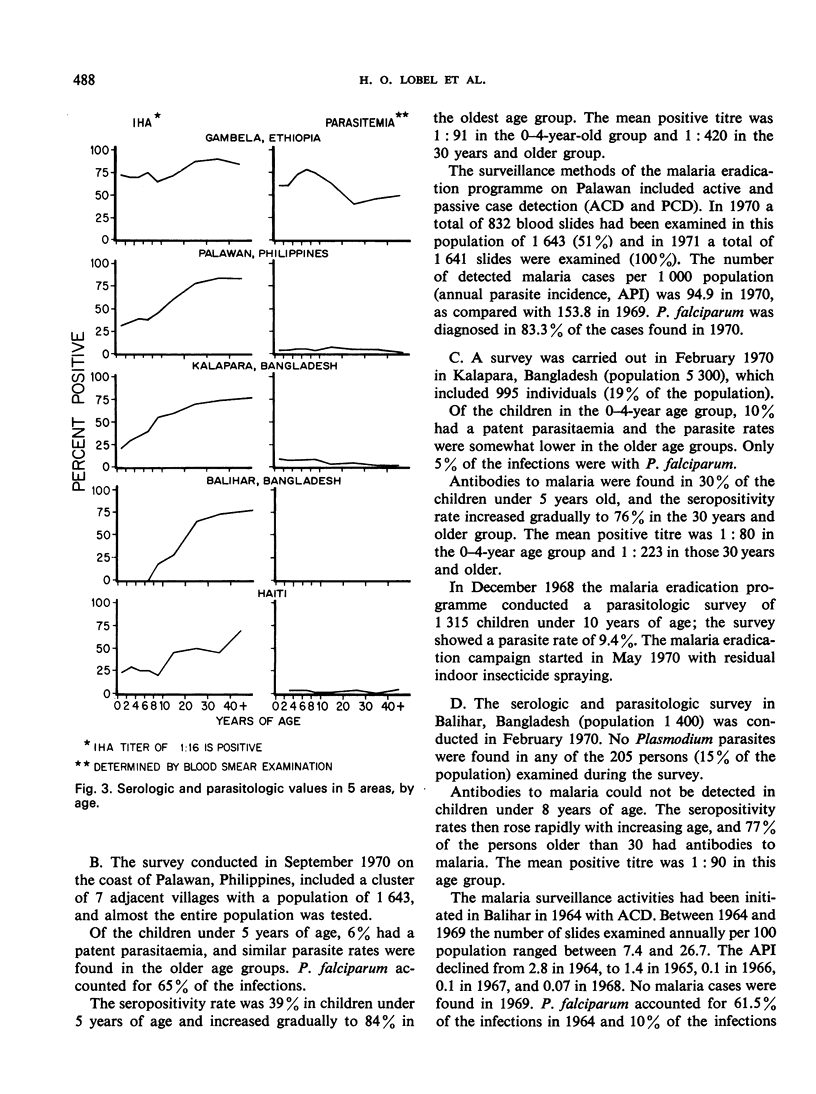
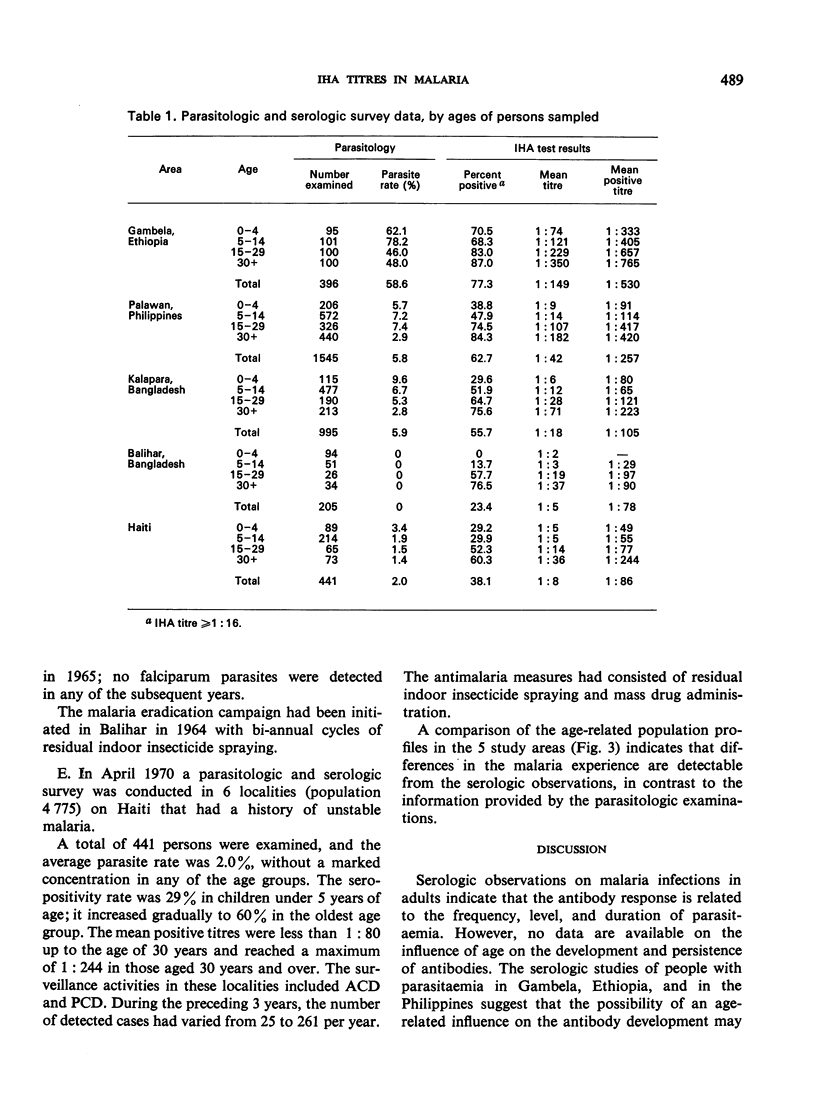
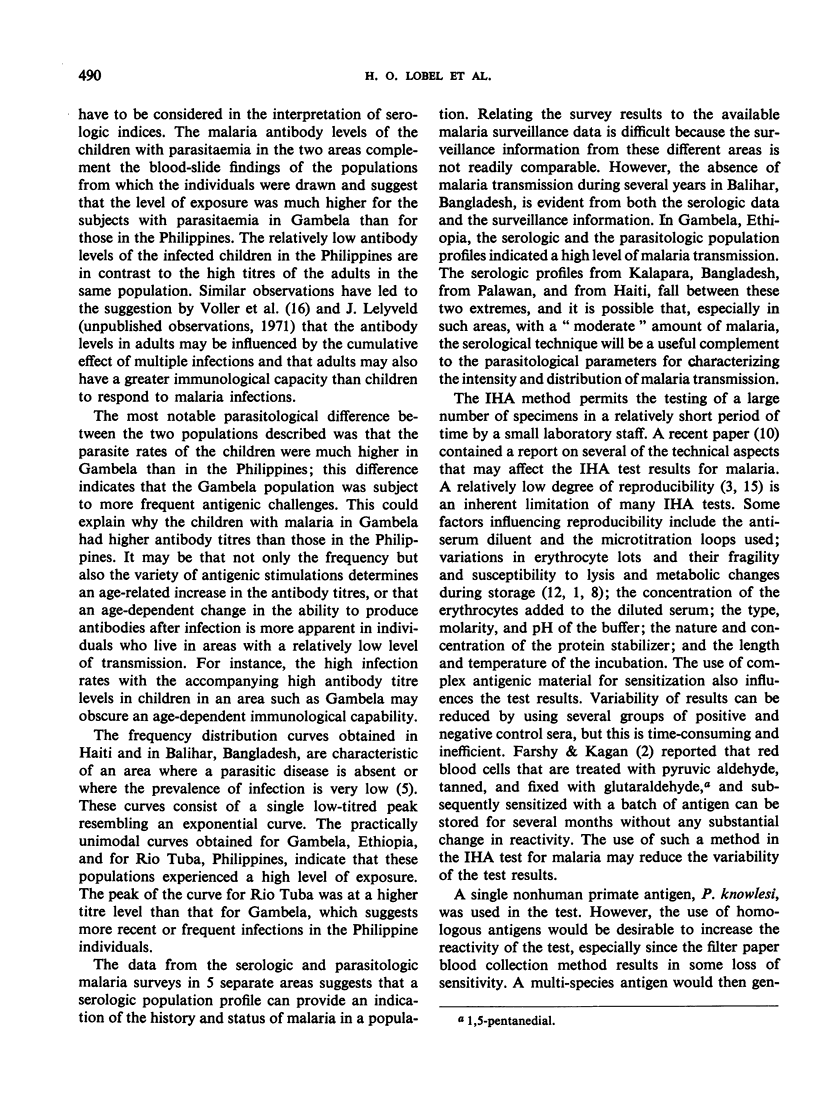
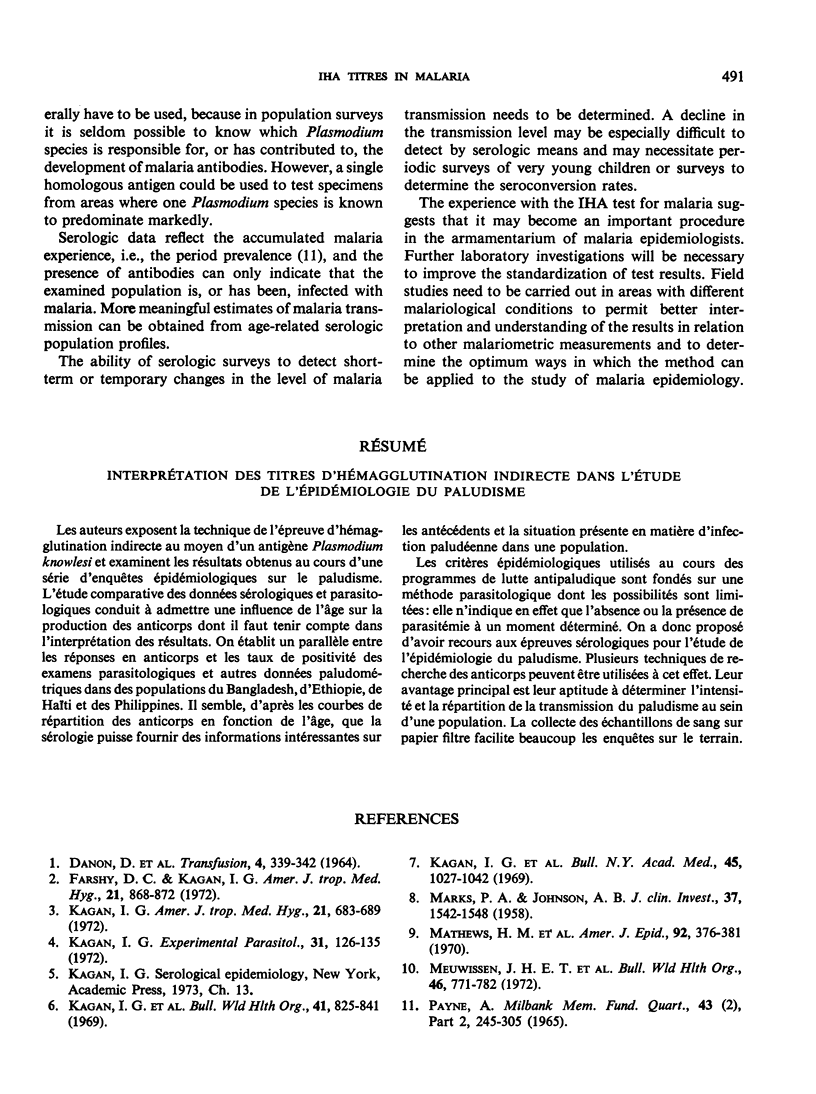
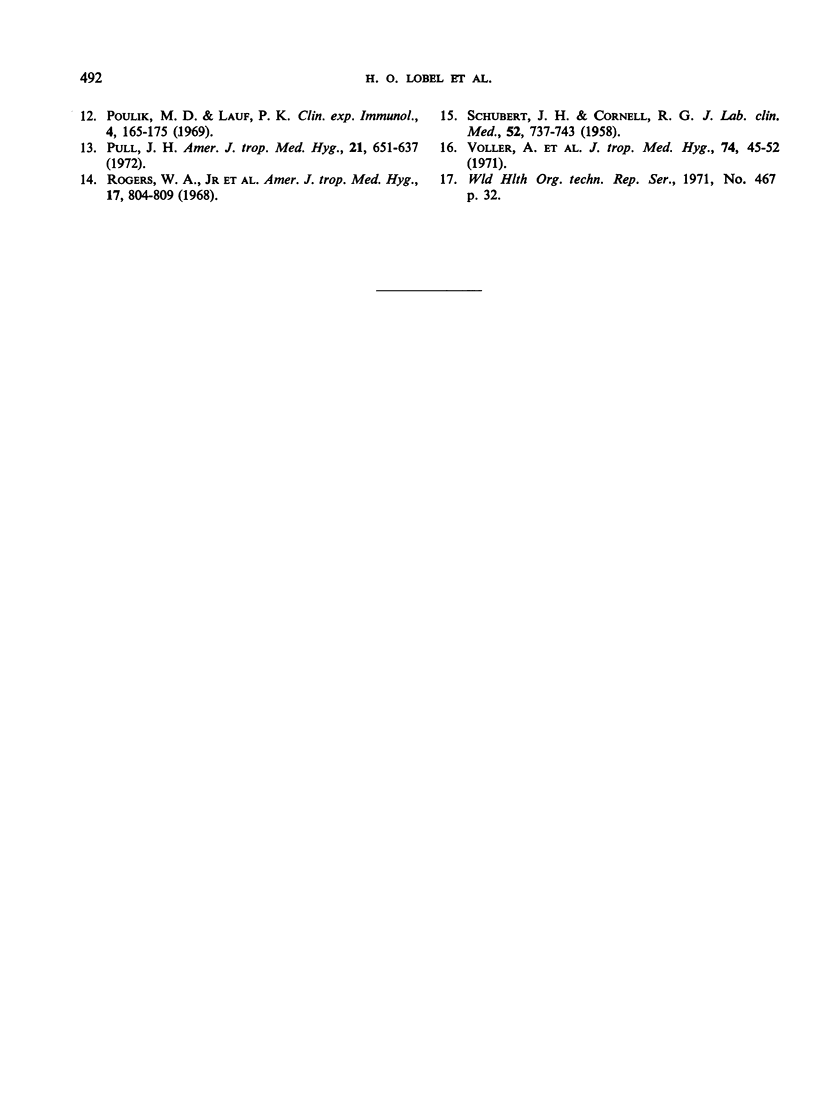
Selected References
These references are in PubMed. This may not be the complete list of references from this article.
- DANON D., FREI Y. F., RIMON A., BEN-DAVID A. SIMPLE RAPID OSMOTIC FRAGILITY TEST PROPOSED AS A ROUTINE IN BLOOD BANKS. Transfusion. 1964 Sep-Oct;4:339–342. doi: 10.1111/j.1537-2995.1964.tb02884.x. [DOI] [PubMed] [Google Scholar]
- Farshy D. C., Kagan I. G. Use of stable sensitized cells in indirect microhemagglutination test for malaria. Am J Trop Med Hyg. 1972 Nov;21(6):868–872. doi: 10.4269/ajtmh.1972.21.868. [DOI] [PubMed] [Google Scholar]
- Kagan I. G. Evaluation of the indirect hemagglutination test as an epidemiologic technique for malaria. Am J Trop Med Hyg. 1972 Sep;21(5):683–689. doi: 10.4269/ajtmh.1972.21.683. [DOI] [PubMed] [Google Scholar]
- Kagan I. G. Malaria: seroepidemiology and serologic diagnosis. Exp Parasitol. 1972 Feb;31(1):126–135. doi: 10.1016/0014-4894(72)90055-0. [DOI] [PubMed] [Google Scholar]
- Kagan I. G., Mathews H. M., Rogers W. A., Jr, Fried J. Seroepidemiological studies by indirect haemagglutination tests for malaria. Military recruit collections from Argentina, Brazil, Colombia, and the United States of America. Bull World Health Organ. 1969;41(6):825–841. [PMC free article] [PubMed] [Google Scholar]
- Kagan I. G., Mathews H., Sulzer A. J. The serology of malaria: recent applications. Bull N Y Acad Med. 1969 Oct;45(10):1027–1042. [PMC free article] [PubMed] [Google Scholar]
- MARKS P. A., JOHNSON A. B. Relationship between the age of human erythrocytes and their osmotic resistance: a basis for separating young and old erythrocytes. J Clin Invest. 1958 Nov;37(11):1542–1548. doi: 10.1172/JCI103746. [DOI] [PMC free article] [PubMed] [Google Scholar]
- Meuwissen J. H., Leeuwenberg A. D., Molenkamp G. E. Studies on various aspects of the indirect haemagglutination test for malaria. Bull World Health Organ. 1972;46(6):771–782. [PMC free article] [PubMed] [Google Scholar]
- Poulik M. D., Lauf P. K. Some physico-chemical and serological properties of isolated protein components of red cell membranes. Clin Exp Immunol. 1969 Jan;4(1):165–175. [PMC free article] [PubMed] [Google Scholar]
- Pull J. H. Malaria surveillance methods, their uses and limitations. Am J Trop Med Hyg. 1972 Sep;21(5):651–657. doi: 10.4269/ajtmh.1972.21.651. [DOI] [PubMed] [Google Scholar]
- Rogers W. A., Jr, Fried J. A., Kagan I. G. A modified, indirect microhemagglutination test for malaria. Am J Trop Med Hyg. 1968 Nov;17(6):804–809. doi: 10.4269/ajtmh.1968.17.804. [DOI] [PubMed] [Google Scholar]
- SCHUBERT J. H., CORNELL R. G. Determination of diphtheria and tetanus antitoxin by the hemagglutination test in comparison with tests in vivo. J Lab Clin Med. 1958 Nov;52(5):737–743. [PubMed] [Google Scholar]
- Voller A., Lelijveld J., Matola Y. G. Immunoglobulin and malarial indices at different altitudes in Tanzania. J Trop Med Hyg. 1971 Feb;74(2):45–52. [PubMed] [Google Scholar]


